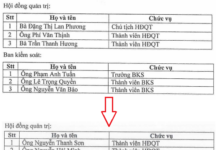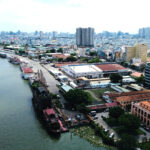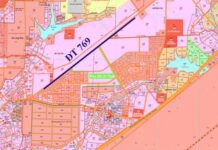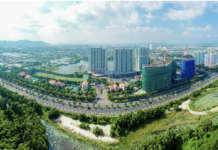On November 10th, the leadership of the People’s Committee of Mui Ne Ward (Binh Thuan Province) announced the enforcement of a compulsory decision, requiring two individuals to rectify the consequences of their illegal encroachment on public land and unauthorized construction within the Mui Ne Sand Dunes National Landmark.

Authorities dismantling unauthorized structures.
According to records, since late 2019, the unauthorized sale of public land through handwritten agreements has been rampant in the area. Subsequently, individuals brought in heavy machinery to level the land and erect permanent structures, illegally establishing a resort complex. At its peak, nearly 7.5 hectares of public land were encroached upon, with Ms. Nguyen Thi Thu Thao and Ms. Nguyen Thi Thuy Trang occupying over 6.6 hectares.

Illegal constructions adjacent to the Mui Ne Sand Dunes. Photo: PN.
On the encroached land, authorities identified at least 7 permanent houses, 2 large swimming pools, surrounding greenery, a solar power system, and a water supply network, resembling a self-contained resort.

The encroached land developed into a self-contained resort.
In response to the prolonged encroachment on public land, in December 2022, the Office of the Binh Thuan Provincial Party Committee (former) issued an urgent dispatch requesting inspection and handling of the case. By June 2025, the People’s Council of Mui Ne Ward dismissed Mr. Bui Ngoc Lam from his position as Chairman of the Ward People’s Committee for his negligence in land management and construction order, leading to prolonged violations.
In October 2025, the People’s Committee of Mui Ne Ward also enforced the demolition of another case involving the encroachment of over 7,000 square meters of public land in the sand dunes area.
“Mini Apartment Boom in Hanoi’s ‘Capital’ Sparks Surge in Illegal Construction and Overheight Buildings”
In the wake of the devastating mini-apartment fire that claimed 56 lives, fire safety and management regulations have been tightened. However, in many areas of Hanoi, the clandestine construction of family homes disguised as mini-apartments, often built without proper permits, persists. A prime example is the Triều Khúc area, known as the “capital” of mini-apartments, where 8-9 story buildings continue to rise unabated in narrow alleys and lanes.









































